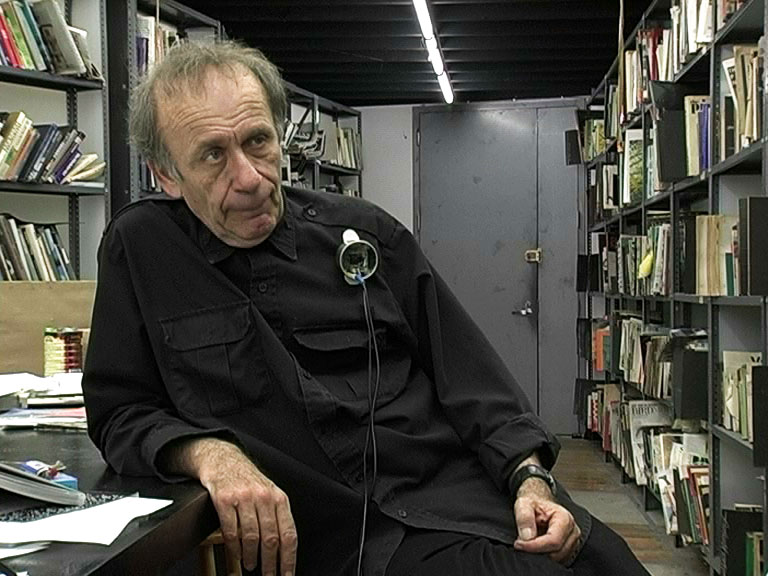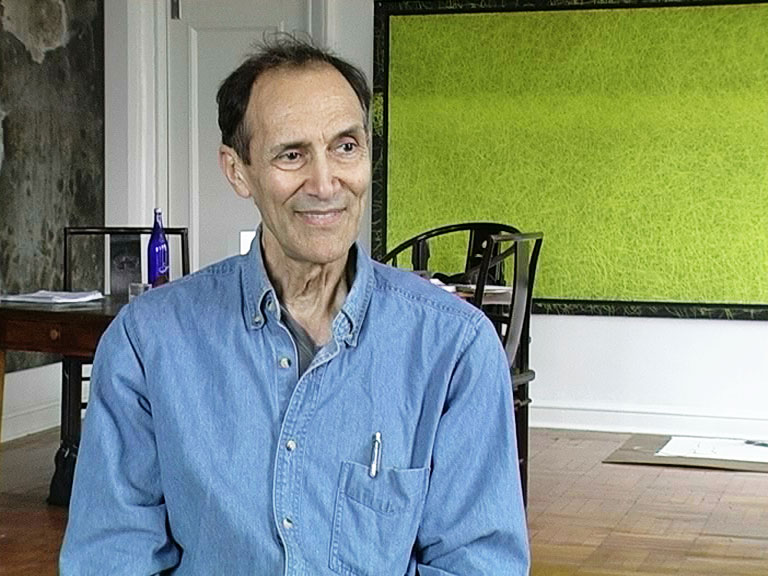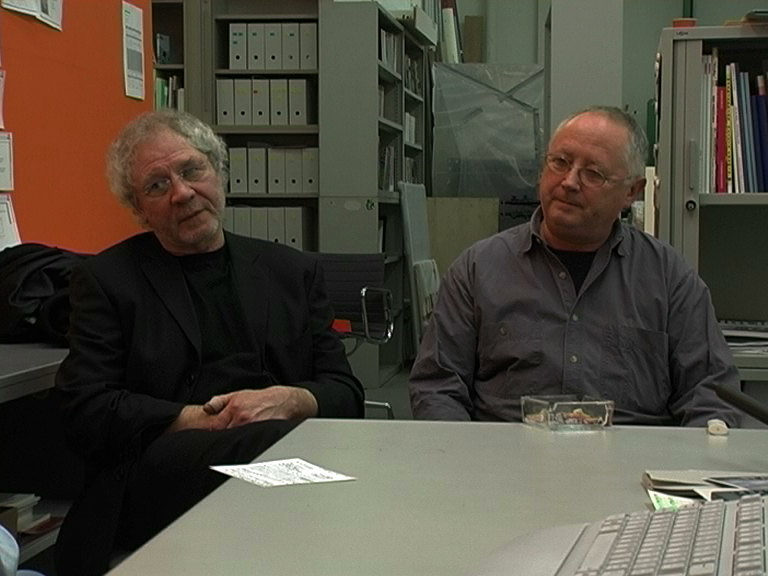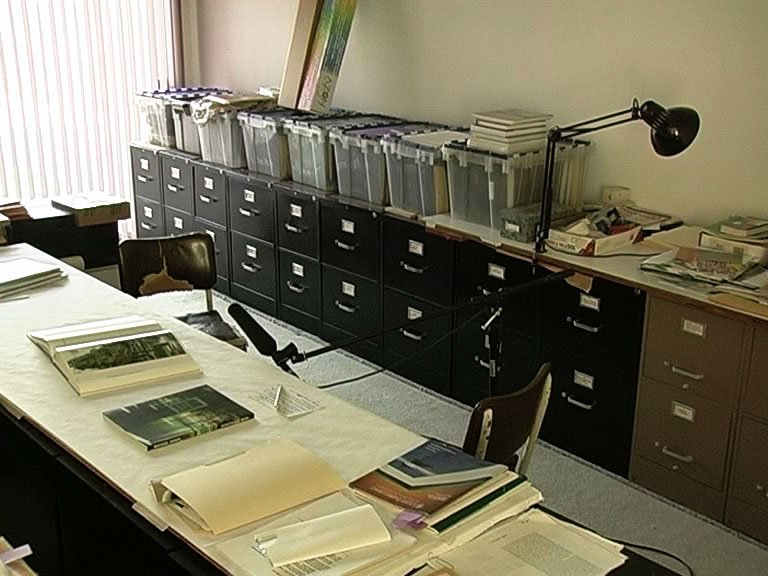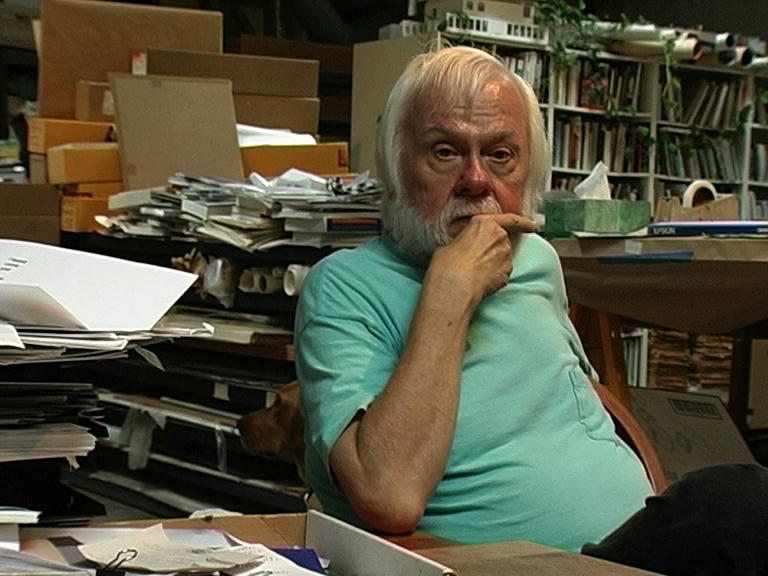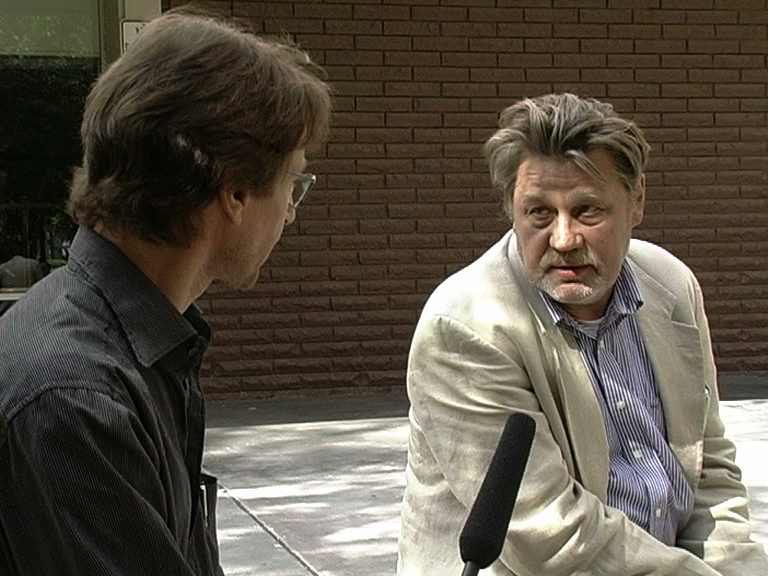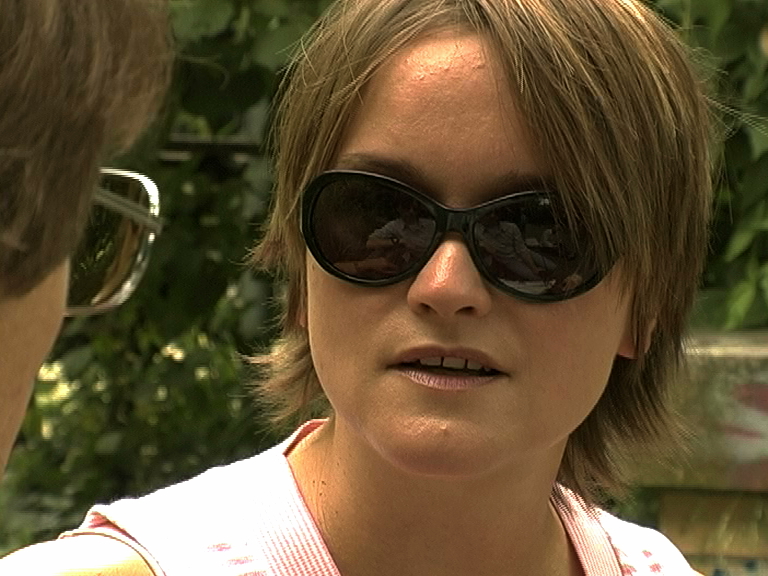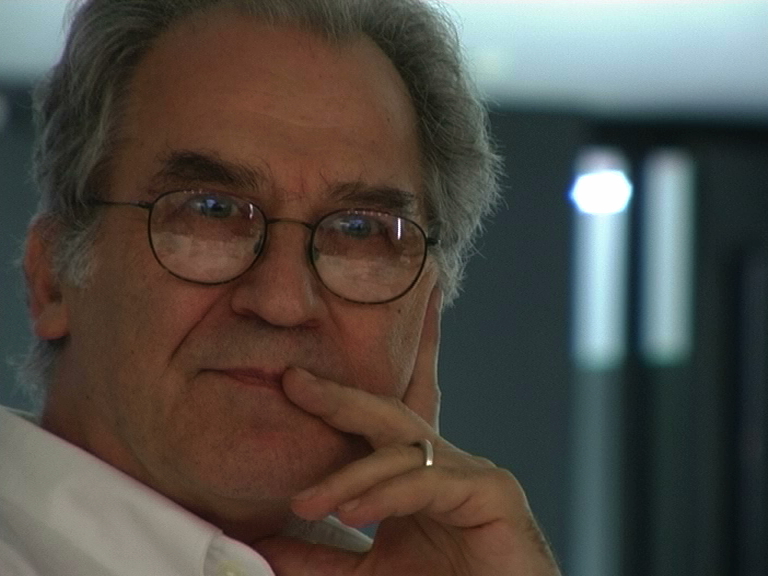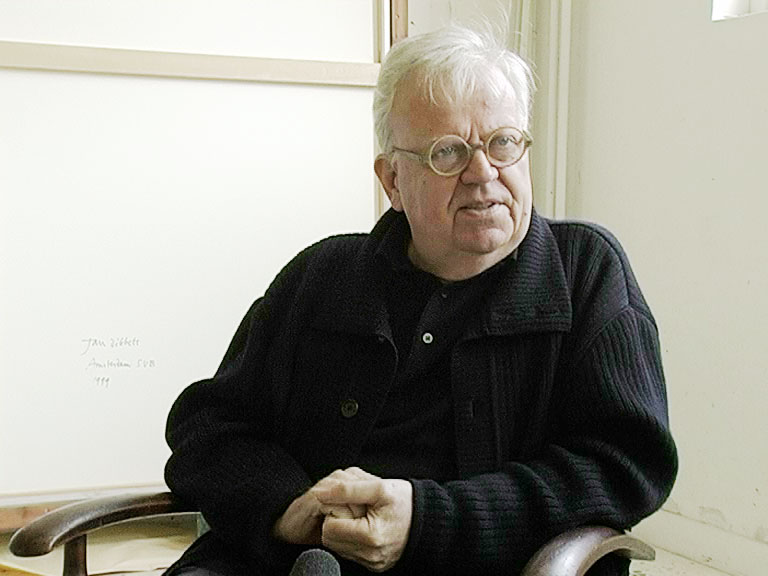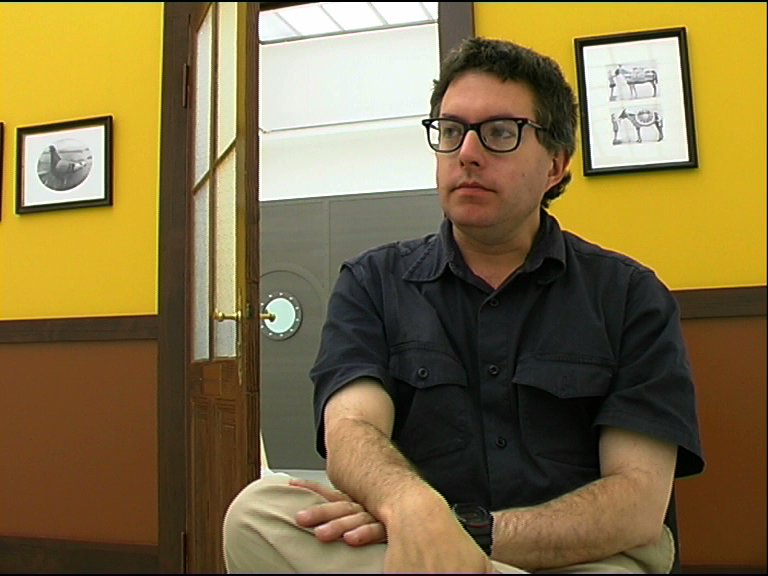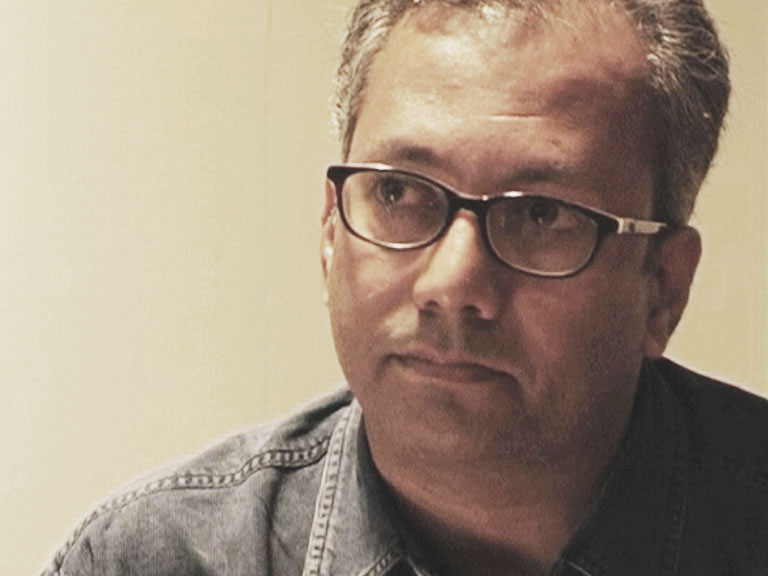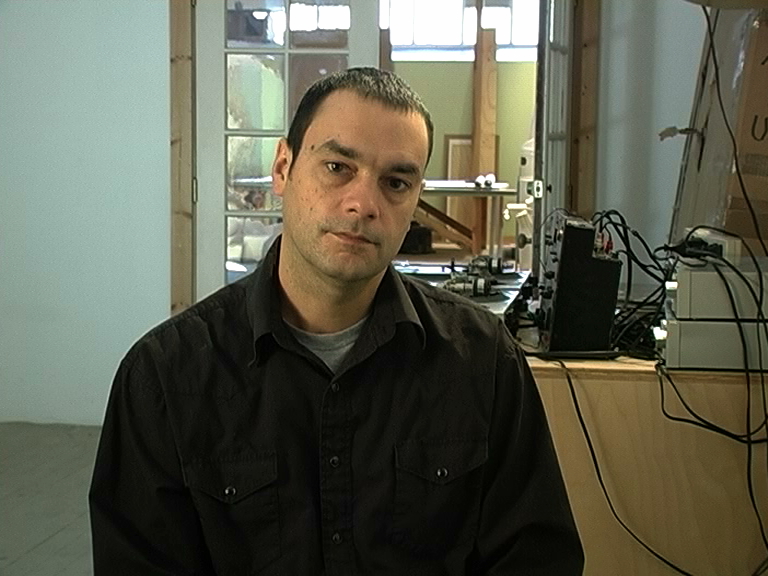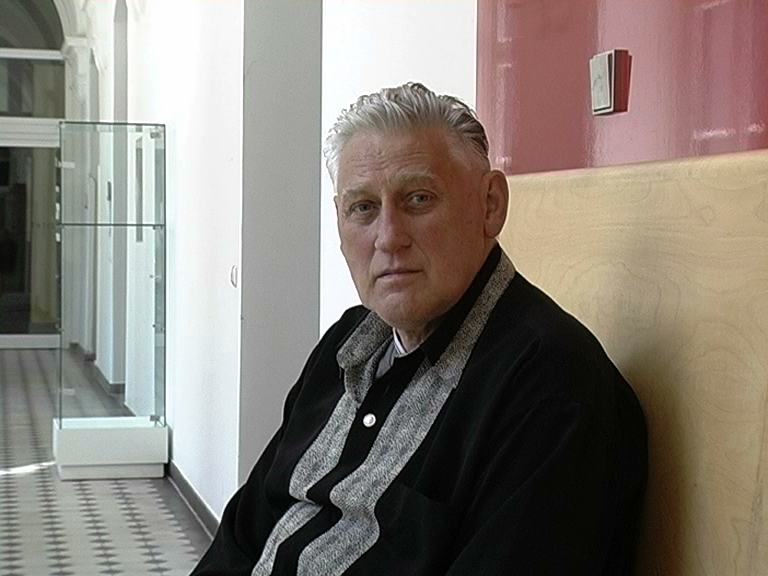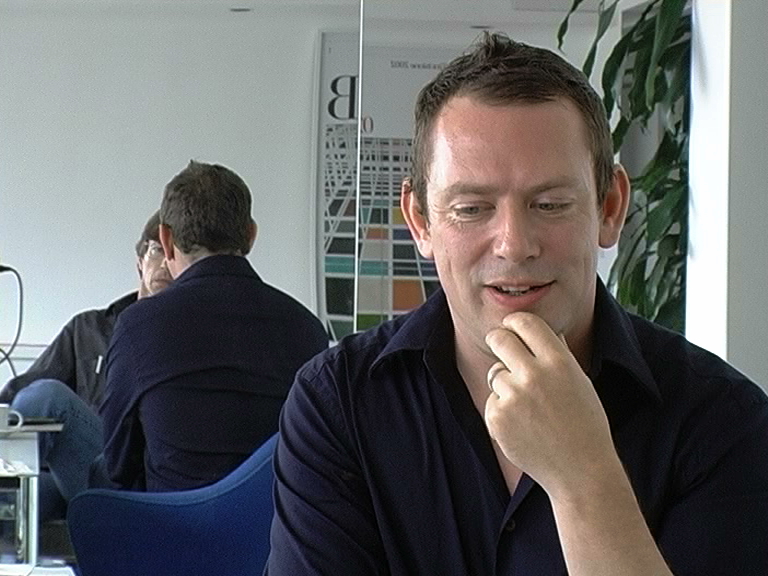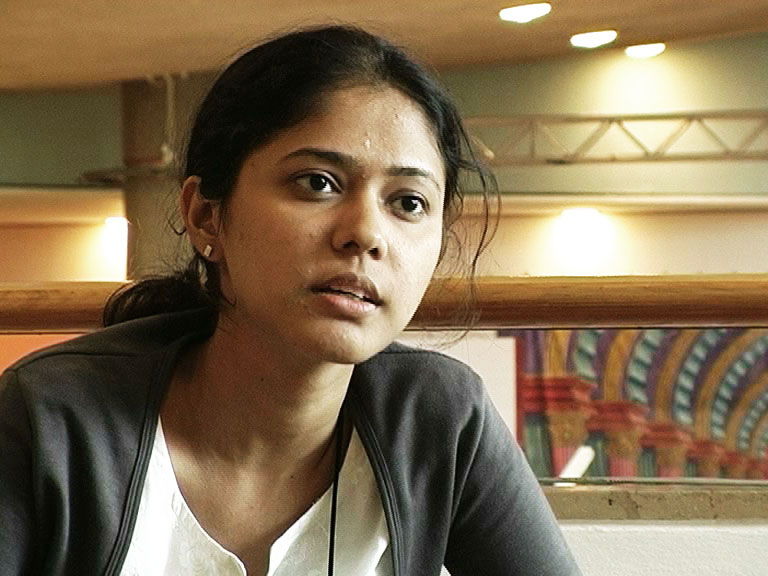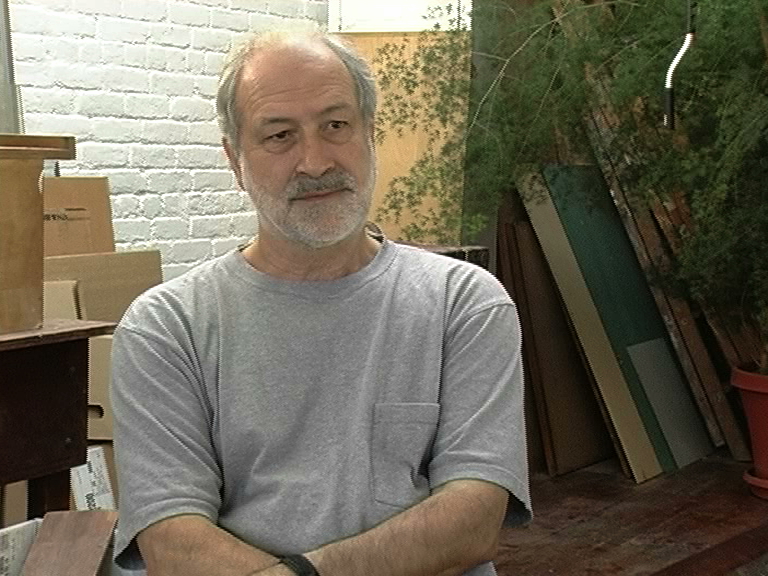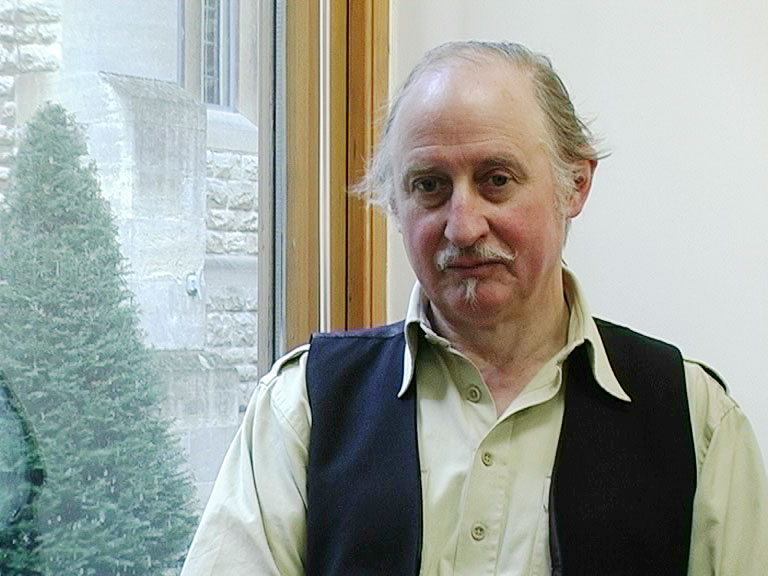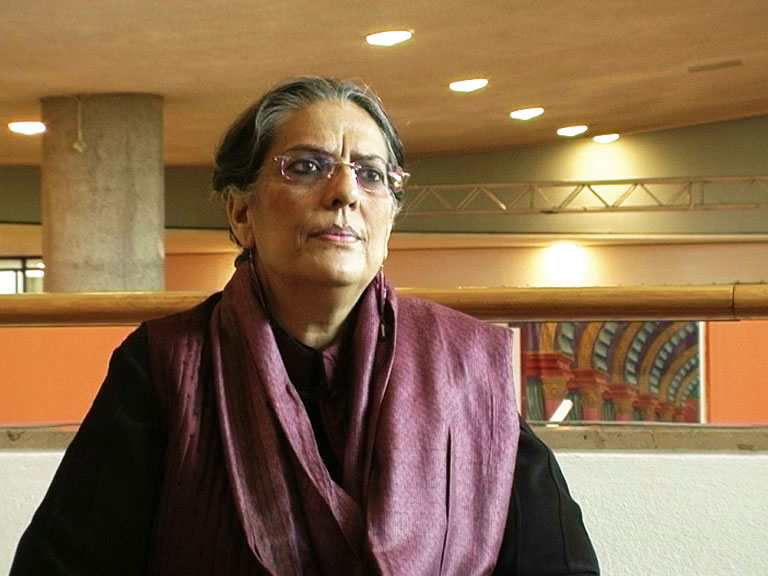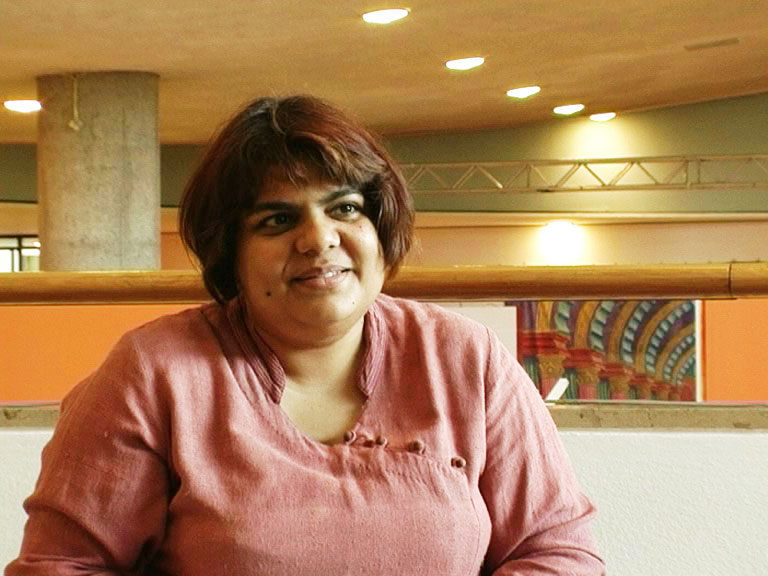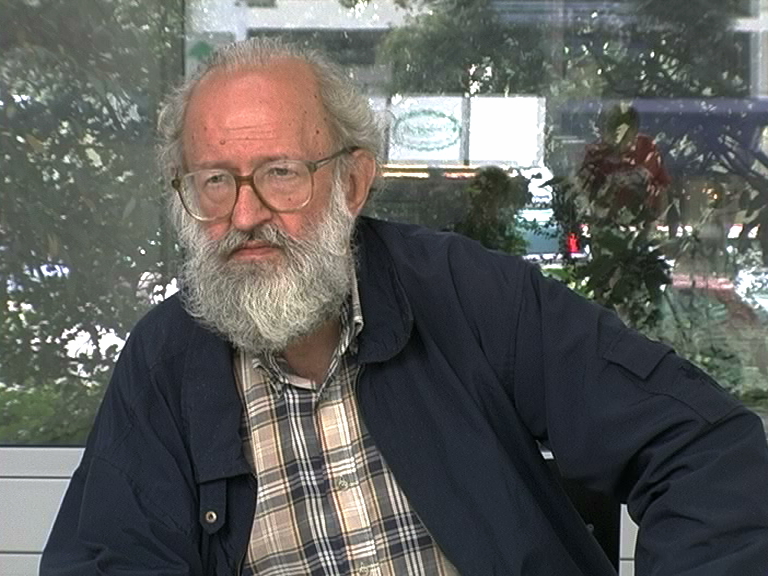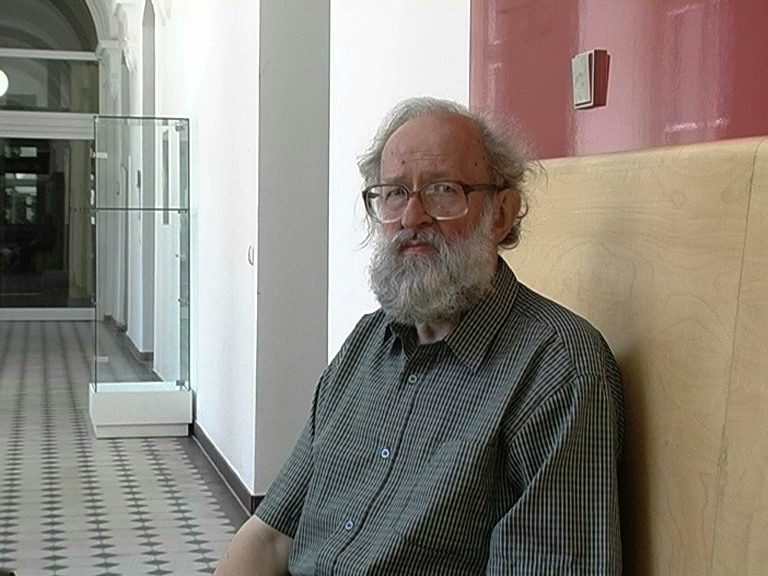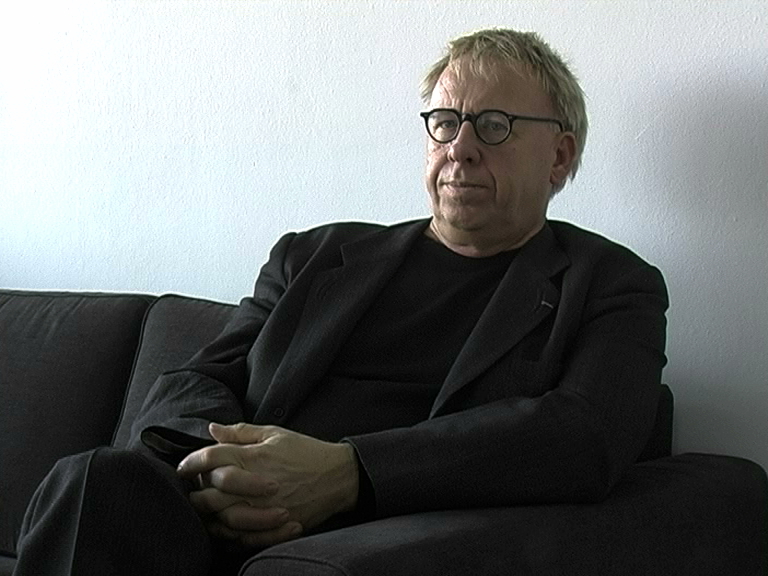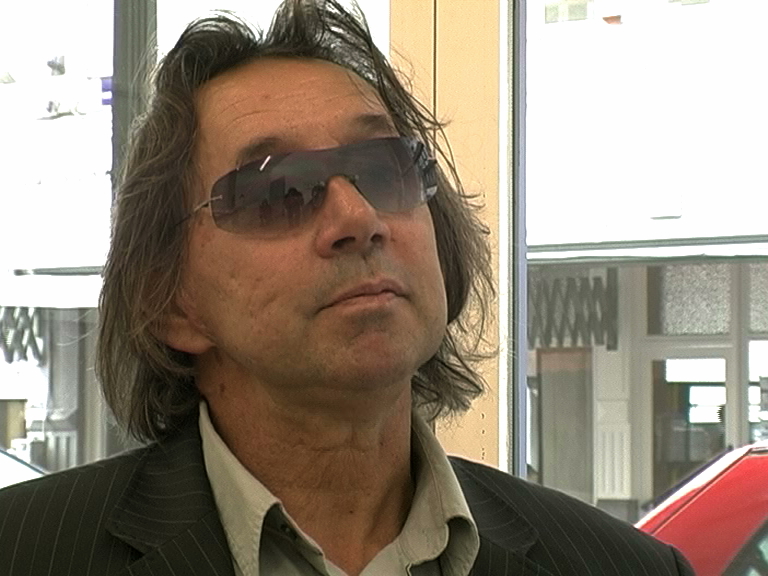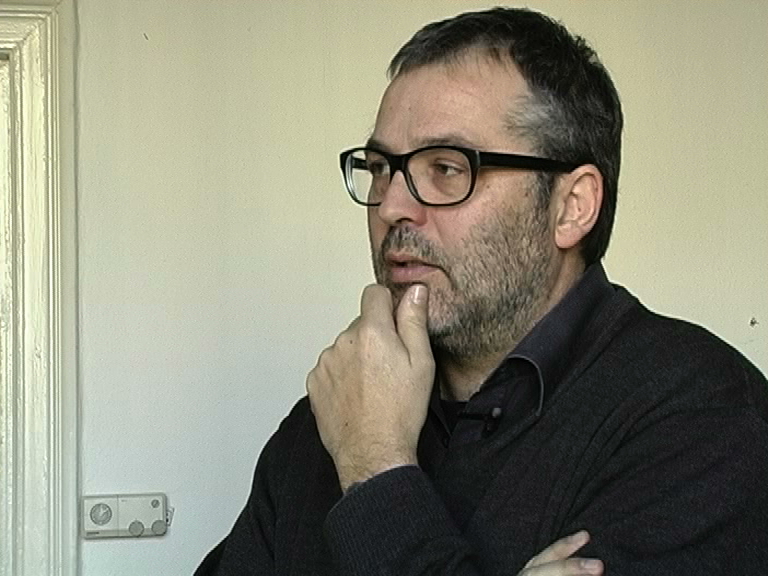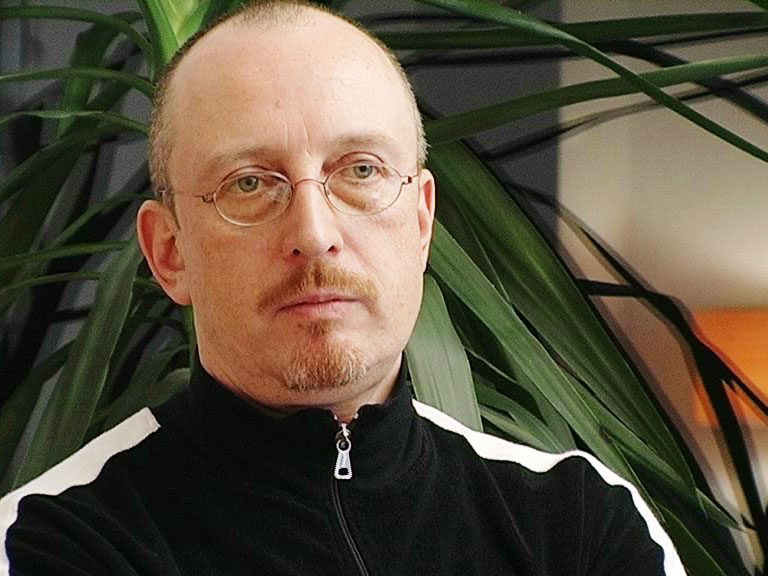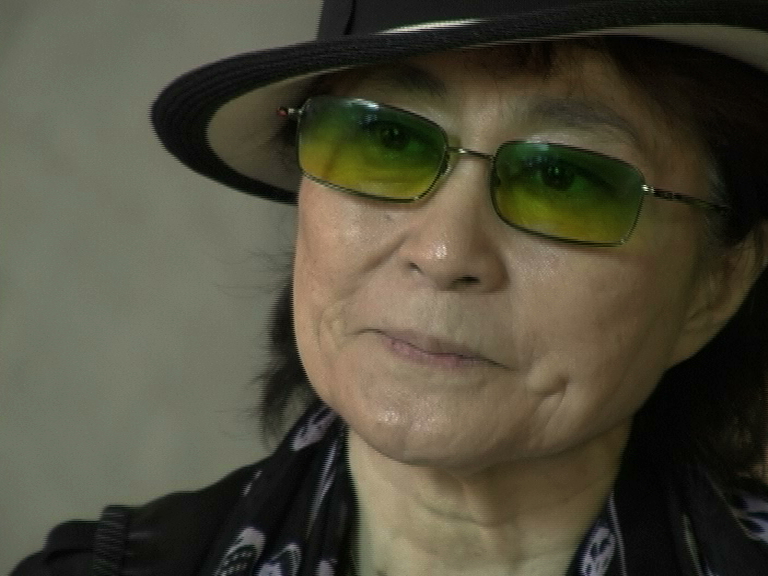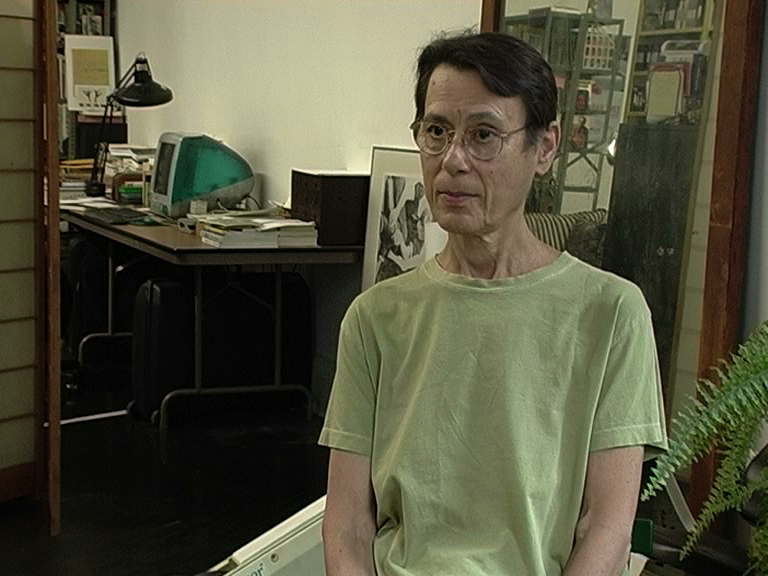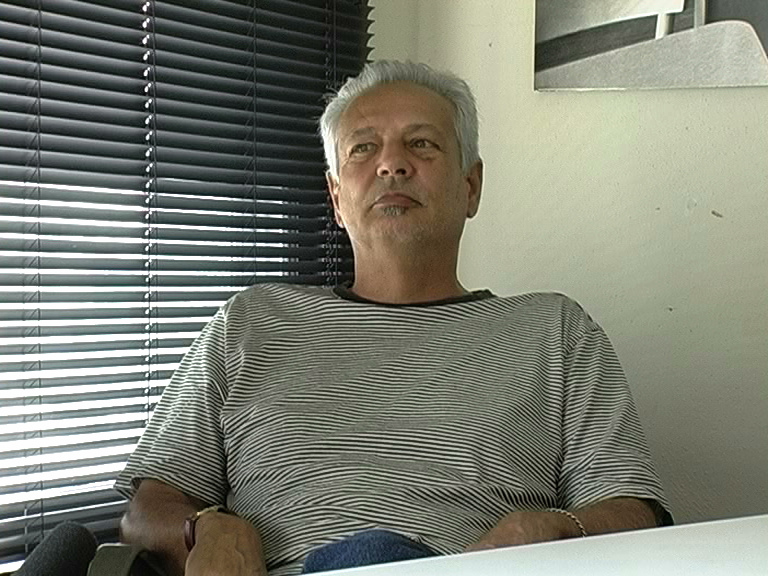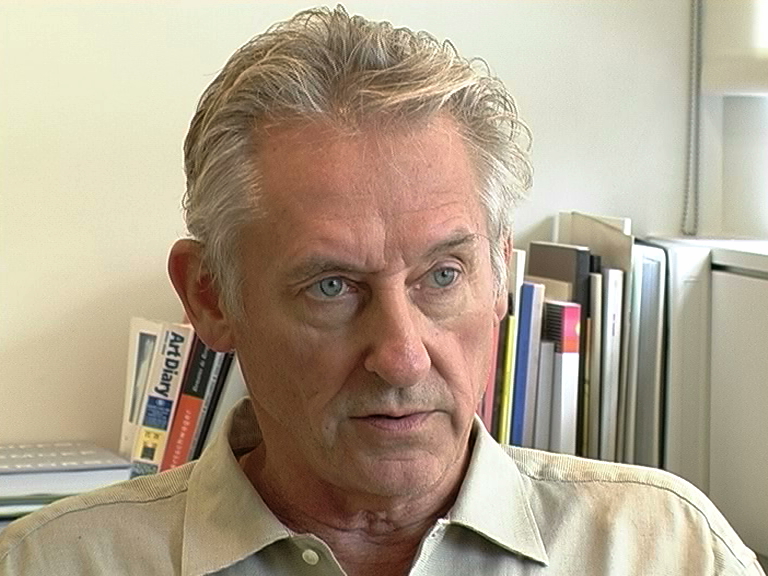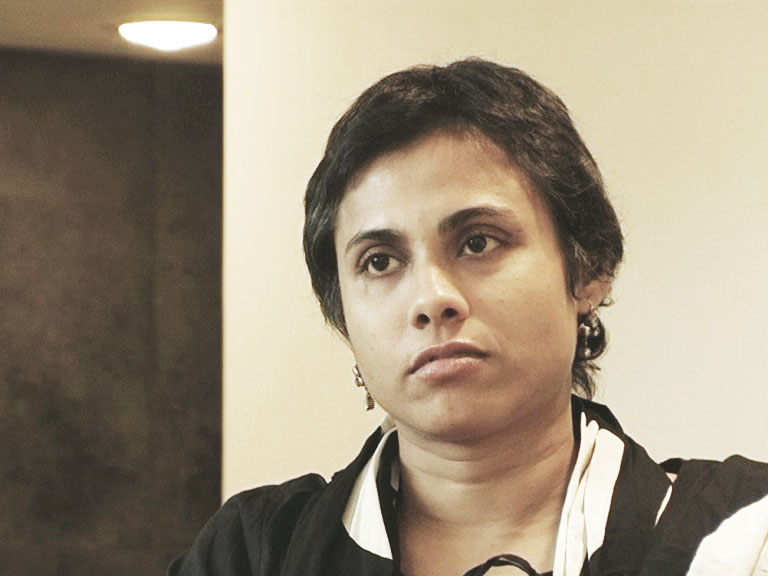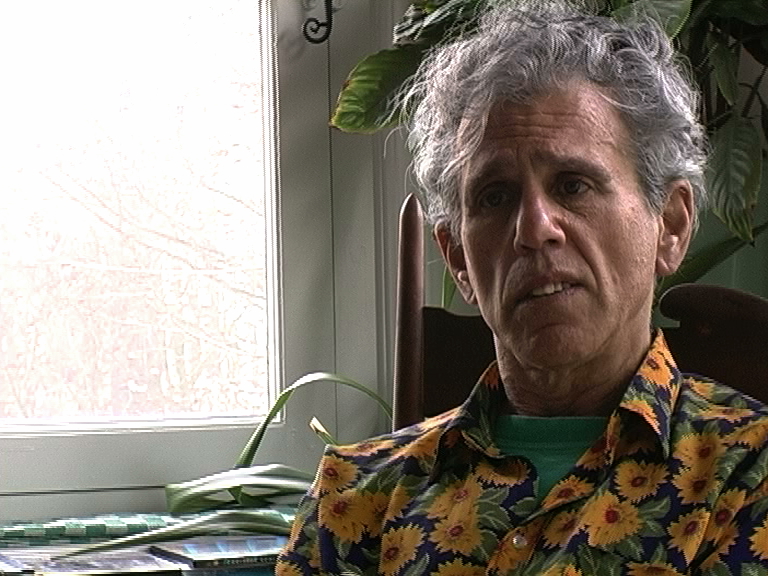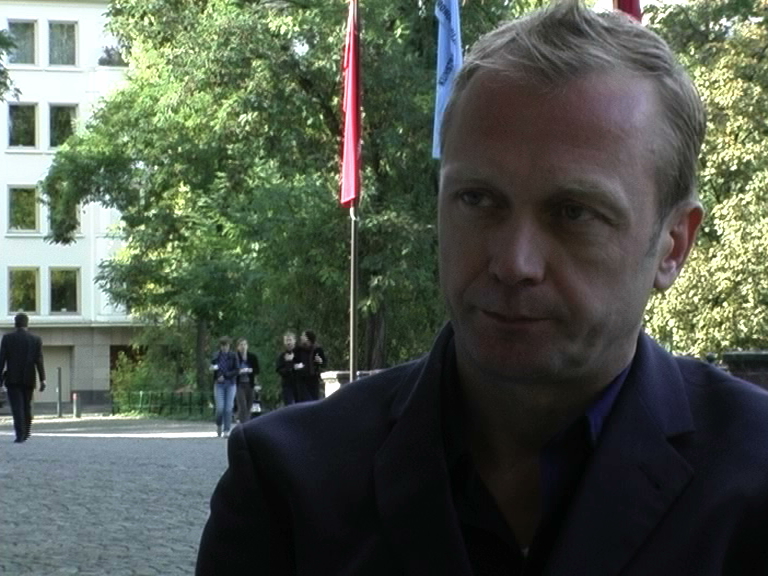S.R.: Your very well-known performances are always working with the relation between anthropological surveillance, something like that, and surveillance or a science of the self, maybe, in an artistic way. […] And I was always strongly impressed by and how you raised existential questions with your art. And the documentation of your activities came to a point that was very interesting for me to see how you came from this personal body language to a kind of a reflection of the self in space, and I always feel reminded of some theoretical thinking like Henri Lefebvre for example.
V.A.: O no, I read Lefebvre much, much later.
S.R.: Well that’s amazing. But how did you come to that point that you worked much more on architecture? Because architecture is determining, determining behaviour. It conditions behaving of the body. So this is very interesting for me, this step, this development.

V.A.: It took a number of steps. I mean in a lot of of ways, probably my work can be almost talked about as a child growing up. First you recognize yourself, then you recognize another person, then gradually there are a group of people. Then eventually – though this probably is a very traumatic moment for the child – you realize that you can leave the room and the room still exists even though you aren’t there, and I think that’s probably how I came to architecture. I wanted to make space for other people. Work for me began almost at home. I concentrated on me. I attended to me. I turned to me and maybe turned on me. It was a self-enclosed activity. I wanted to break the self-enclosure, so I had to bring in another person. But that really didn’t break the self-enclosure it only made the self-enclosure bulge. The viewer, any possible audience was always outside. The viewer is an outsider and looking in on some secret. So gradually work started to bring in the viewer and that’s probably when space became more important. The space of the body could be enough for me. Once another person was there, I had to provide a space where I could be one point in the space, a viewer could be another point. Once there were those two points, does one point target towards the other, does one point envelop the other, so different ways of a person approaching another, enclosing another. And by that time you’re in the beginnings of architecture probably. Though, again, it took a very, very long time. Work of mine that dealt with person was I think a part of the time it came out of and probably it got all its subject matter from that time. It was the time of the late 60s, the early 70s, a time when common language was “finding oneself“. So it was a notion of concentration on the agent, the instrument. After a while it wasn’t the late 60s, the early 70s anymore, and I think I and a lot of other people had a different notions of the self. Self wasn’t something that you concentrate on or contemplate. The late 60s and the early 70s probably thought of the self as this is something with which you withdraw to a kind of meditation chamber. I can be alone with myself, as if that self is an object, as if that self is a kind of precious jewel. I think gradually 75, 76, 77, 78 I and a lot of other people had a very different notion of self: self was a system of feelers, self existed, self wasn’t something you would drew in order to find, self existed only as part of a social system, a political system, a cultural system. So by that time it didn’t seem so necessary to focus on person anymore.
S.R.: For us, we visited your very impressing exhibition in April and […]

V.A.: Ah, you mean here in New York at Barbara Gladstone. That was specifically that period you were talking about.
S.R.: And we were talking about if it would be possible to come to artistic approaches like this in the present time. What do you think about that?
V.A.: For me the work came so much out of the fact that I was from another field. I was a writer. The first work I did in an art context was a way for me almost to get off the page. Now that I am in real space, what do I do there, what makes me move in real space? What interested us in doing that show was that there were a number of prototype pieces that maybe a lot of people know but it seemed like the work of that time was a process of trying to almost extrude my body into real space. How do I feel my way around real space? How do I feel my way around experiential space? So it was about a process of pieces, it was almost like every day another piece, every day a few pieces. It’s difficult for me to say, is that possible now? I think it’s kind of significant that performance and activity probably usually comes early in a person’s career, because performance is almost something between fields. It’s between maybe art and theatre, but I don’t know if it can last. Maybe eventually it either becomes something like sculpture, something like architecture, something like theatre. But I wonder if performance is a way of trying out things and then it should seem like that it can happen in any time. But remember, it was also a time in which notions were a very important thing on a lot of our minds, and when I say “our” I’m speaking of people who didn’t necessarily know each other. But we all worked in a certain time, we knew each other’s work. A lot of us had many, many objections to the notion of an art gallery, an art object as a saleable thing. This seemed like a thing of the past…
S.R.: So can we come back to this transformation of the performance.
V.A.: Maybe we should continue where we were talking about, when you were saying: can that kind of activity be done at another time? One thing significant about that time was that a lot of us – remember, that was around 1968, it was the time of student revolution in France, demonstrations against Vietnam war in the United States. It was a time when father figures could be toppled. One of those father figures was museum and gallery. I think a lot of us thought that art possibly is only the confirmation of a kind of class system. Art separates those who can afford to buy the art from those who can’t afford it. Which is why I think a lot of us turned to media that resulted in not so much in original every produceable. I think a lot of us were struck by the fact that when many people talk about a work of art they haven’t necessarily seen the actual work of art, they’ve seen reproductions. If that’s true then you can ask the question: where does the art reside? Does the art reside in that original that not so many people have seen or can you maybe just as validly or maybe more validly say: the art resides in all those reproductions, no matter how “bad” they are. In other words a lot of us were starting to think of art not as an object, because an object can be bought, but as a distribution system. And I think the keynote of conceptual art was distribution. Conceptual art was about rumor, reportage. You could get it by talking, you could get it by a report in a newspaper that anybody could buy. I think a lot of us had the illusion that we were going to destroy the gallery system. Because of the kind of stuff we did galleries had no reason to exist anymore. But of course galleries were stronger and bigger than we were. Conceptual art needed reproduction, needed distribution in order to exist, but that distribution meant documentation. That documentation could very easily be turned into a saleable by a gallery. So in some ways our need or desire for distribution totally subverted what I think a lot of us wanted to do.
S.R.: But you also benefited from the gallery system or the relation between museum and gallery system.
V.A: They provided showing places. But also even more than that, magazines don’t exist without galleries. 40% of an art magazine is gallery ads. Maybe we weren’t so conscious of that, the fact if we needed magazines, we were resorting to the gallery whether we realized it or not. So yes, we depended on the gallery. I think I in my case maybe especially because, in any other context what I was doing needed a gallery or a museum in order to be justified. Probably many people in the world were doing what I was doing, but they were doing it in an insane asylum, in a mental hospital. I was doing it under the auspices of a gallery or a museum so it got a kind of validity. But there’s a funny time lag with art. A piece I did in 1972, “Seedbed” became relatively notorious, this masturbation piece under a ramp. But people were fucking in the streets in 1965. To masturbate under a ramp was a very minor thing as far as the world was concerned. The world had already changed and art always tries to keep up with the world.
S.R.: So it was an artistic gesture in relation maybe to a social behavior?
V.A.: I wanted it to be the opposite of an artistic gesture. But as long as I was involved with a gallery or museum it was an artistic gesture, no matter what I wanted to call it. Social interaction was already occurring, all I did was to import social interaction into the world. And that’s why the work eventually became architecture because at that time what seemed to be the most interesting thing about art that you could take from any field and bring that into art. You could take from psychology, you could take from sociology, from history, from news. But once you were taking from the world and bringing it into art you were closing it into a kind of glass box. Maybe the opposite direction should occur. Why not take the art and bring it into the world? And the world is a world of architecture and design. Again I’m jumping far ahead here.
S.R.: No, that’s okay. My thesis is that architecture is the oldest mass medium that we have.
V.A.: Yes, it’s a kind of platform for people. Architecture is a kind of performance base. It provides people a way to make some kind of activity. Usually architecture imprisons that activity, but maybe it could do the opposite. I mean architecture should ideally liberate people. A person being in a space that‘s maybe twisted, turned upside-down should feel: space isn’t as determined as I thought. I, now, I the user, I can turn my space upside down, I can turn my own space inside out. Do I know if it does that? I don’t know! (laughs) If it doesn’t do that then it fails. Architecture should leave people to do their own architecture, their own design. Just as I thought what I was doing stuff in 1970. If I am testing my body, I am trying my body out, this maybe can be an example, not a role-model necessarily, but an example. Now, can people try out their own bodies. But again, I was taking that from what people were doing in the ordinary world anyway.
S.R.: For me the interesting point is that you tried to co-opt on your work with a so-called panoptic system, what Michel Foucault called a panoptic system. You were using it for yourself to testify the self and the architecture.
V.A.: Particular media lacked that. The idea of using film, for example. I could set up a camera in front of me, the camera is aiming at me. What can I do then? All I can do is, I can maybe aim at myself in the same way that the camera is aiming at me. When I started to use video I was struck by the fact… When I saw video I had to ask myself: I’ve done things with photographs, I’ve done things with film. What can video do that film didn‘t? What video could do was provide simultaneous feedback. I could see what I was doing at the moment I was doing it. So video was a learning device. I could see what I was doing, maybe I’m doing it wrong. I can guide myself by means of the video. I can correct my actions by means of the video. Earlier you used the word “science”. […] I was probably always an outsider of science, but what interested me in that early period of work is that I wanted to go things step by step, the way maybe a scientist goes step by step. For a lot of us by that time Sol LeWitt’s sentences and paragraphs on conceptual art were really of prime importance. You set yourself a task, you carry this through, you don’t have to make particular decisions anymore, your decision is made with the first action and now it goes step by step, or if some accident occurs that now determines the step.
The idea of the individual hand was something I think probably all of us tried to avoid, because the individual hand meant the individual artist’s signature, meant this makes something commercially, monetarily valuable. We wanted to, a lot of us wanted to do things that anybody could do.
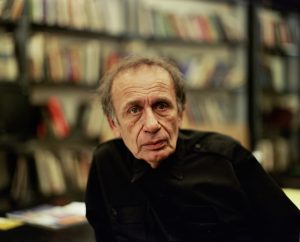
S.R.: Yes, but the interesting thing is – and I think now I come to the second part of the question – the interesting thing is, that’s one of the unanswered question for me, that all these different approaches and all these different strategies are always using, developing their own kind of – I don’t want to say originality, but their own kind of – self-expression, self-speaking language.
V.A.: A lot of us at that time probably would have objected to the word “self-expression” because we wanted to be an instrument of the world. We didn’t want necessarily express ourselves. We wanted to re-find the world through ourselves. So maybe it’s not so different.
S.R.: It can be seen as a big break in the tradition of art because suddenly there was something like minimal and then all these different approaches like conceptual art. But…
V.A.: Though, for me, Minimal led very directly to the work I was doing. Minimal art was that kind of father art for me, Minimal art made me rediscover the space around the art. Before Minimal art, I had either learned or been taught to look what was within the frame. With Minimal art, the frame expanded. You would walk into a gallery and you would notice everything because you weren’t quite sure what the art was. You would notice a light socket because that might be part of the art. You weren’t really sure. That kind of expansion led very much to Conceptual art.
S.R.: So if Minimal art was a reflection of form for you, is there something other, maybe literature, that had an influence on you?
V.A.: Yeah, Samuel Beckett was probably an influence, Robbe-Grillet was an influence. There are probably things I’m forgetting. Early stuff of mine looks very much like either a Buster Keaton movie or a Samuel Beckett play. Significantly one of the last things Buster Keaton was in was a Samuel Beckett movie. But even the appearance: I’m wearing black on a white field – every Buster Keaton movie is like that.
I mean, you mentioned the word „existential“ earlier, and maybe that was true, but I wanted an existential with a kind of sense of humor and Buster Keaton had that and actually so did Beckett.
S.R.: I would like to come to another question. You already touched that area, but for me there is one question: Do you have a specific aim or something like a goal with your work, a focus? How would you define that?
V.A.: With all the work from then to now? It might be difficult. But what hasn’t so much changed for me is the idea of all my work from then to now starts with taking something that’s a convention in the world. And what interests me in the convention is that it’s immediately recognizable, it’s immediately accessible to others. You take that convention and if it’s so recognizable to others, now you can play with it, now you can turn it upside down, now you can twist it. That’s the notion of taking something that’s already there and twisting it, stretching it, it’s probably something that has always been a keynote. The notion of person reacting to person, person reacting to his or her surrounding, person reacting to his or her culture. But not just reacting to the culture. Maybe I can nudge into the culture. As one person is with another person, each person is trying to dominate the other person. If a person talks, you’re forcing that other person to listen. Fortunately you can go back and forth. The person that dominates can eventually be dominated. Back and forth, back and forth. But maybe eventually you make some kind of break or bulge and you start to blend together a little bit. Maybe not blend together, because “blend together” would mean that the differences go away. The more interesting coming together is when the differences remain, so it’s a kind of collision, but the differences and loose ends are still there. And I think the same thing should happen in the space. You can maybe change the space, you can stretch it out a little bit, you can bulge it out. In so doing, if spaces are built because they are allowed to be built by the dominant culture. If you can bulge the space, maybe you can bulge the culture a little bit, too.
S.R.: I have a question that has already been touched…
V.A.: Maybe we can go from another direction.
S.R.: If there are something like conceptual paradigms in the beginning, the 60s and 70s, do you think that these paradigms are still in function? Or is it like we have always to renew it, always have to develop new thinking points and new approaches of conceptual work?
V.A.: I think you necessarily have to at least revise or renovate them according to the time. Maybe some basic principles seem to be the same but as they are revised or renovated it starts to change the principle. For us who were doing stuff at the end of the 60s, beginning of 70s, the notion of film, the notion of video was almost a radical thing. Now obviously I don’t know if anybody can do Conceptual art without trying to think with the computer. The way we were trying to think with a film camera or a video camera. So, necessarily, the time, I think, changes the principles.

S.R.: I have only one more regular question and this is a little bit more personal. My question is: What is your ideal typical daily work as an artist. Is it possible to describe that?
V.A.: Again, I worked very differently then than I do now. I’m not sure if I was as much always working then at that early period. Because I was desperately trying to find a way for myself in the middle of actual space, I necessarily had to do a lot of pieces. But there were probably periods between pieces. Now I work very differently, now I work as part of a group of people. Then, my work was totally solitary. Then, when I thought of a camera or I thought of a film camera or a video camera, I never thought in terms of a camera person. The camera person would almost spoil it. The only work was I trying to be alone with myself. So the camera had to be there and then me. Now when I think of the work, the work I do is more in the same way that I was making maybe a place for myself. Now I want to make places for other people. And the only way to do that is to start with other people. A working day is very different now, it is in the middle of other people, it is in the middle of a studio with people. We are constantly talking, discussing. The way the studio works is maybe I start a project of with a general idea but the way the studio doesn’t work is I have an idea and everybody else carries it out. It’s more I start with an idea and everybody argues about. The idea comes from some mix from all of us. So it’s a very different way of working. The more work has become architectural the more work occupies almost every minute of my day. It probably did then but a lot of it was sort of research material. It was a research period then you can do a piece. Now research becomes very much a part. It becomes harder to read now than I did then, but it might be the time. It‘s very difficult to read in a computer world. Reading is a private activity. It’s even more difficult to see movies now. I always wish movies could be projected on buildings on the street so as you walk through a city you can also see a movie. You could be in the real space of a city and in the virtual space of a movie at the same time.
S.R.: I want to stress your kind of collaboration, your kind of maybe free collaboration. How did it start that you decided to work in a group or a collaborative model?
V.A.: Again, that’s a very significant question, because it is so different from the way I was working. There was a kind of transition period. Throughout the mid/ late 70s when I was doing installations, and early 80s, necessarily other people were building projects for me. Because remember I didn’t know how to do anything.
That’s another thing to mention about Conceptual art. If it wasn’t for the words Conceptual art, I would have had absolutely nothing to do. I would have had no place in art. I could only appear in art at a time when the words Conceptual art were used because at another time I would have to say: “I can’t paint, I can’t draw, I can’t sculpt”. Once the words Conceptual art were used, I could say: “Well, I think I know how to have these ideas, so maybe there’s a place for me.“
Back to your question of the changeover. Once in the 70s where I thought that I should be doing something. I don’t even know if in the beginning, I could say I wanted to be doing something like architecture. I knew I wanted to do something in a public space more than in the private space of a museum or a gallery. But I thought if I’m going to do something in a public space, I wonder if it can start from a private person. If something starts privately, does it end privately? I became convinced that in order to do something that was going to result in a public space. It had to start with at least a small version of the public. It had to start with three people or more. One person is a solo. Two people are a mirror image, a couple, the third persons begins the plot, starts an argument. It was absolutely necessary to work with other people because the process of thinking had to be public, or at least semipublic as much as the actual work. If it was only my ideas it would probably end up as my space. If it’s our ideas maybe then that “our” could be expanded. For me the studios works best when it’s a mix of genders, a mix of nationalities, a mix of ages. Because then all of us might be saying the same word, but we have totally different meanings because of our backgrounds. It’s those totally different meanings that can make the work always be a little bit alive, have those loose ends. If we all have the same meaning we just make a finished circle. If we have different meanings then we have little jagged ends, little loose ends.
S.R.: So since I came to the end of my list, I want to ask you if you have another famous word or something you want to say? Something that is burning in your heart, you want to bring it out?
V.A.: …I can’t think of anything offhand because we’ve talked about the money notion of Conceptual art, that seemed important. We talked about the rumor of reported distribution. I think that was important. Now I can’t think of anything.
S.R.: Okay, then I thank you so much.
V.A.: Thank you.




